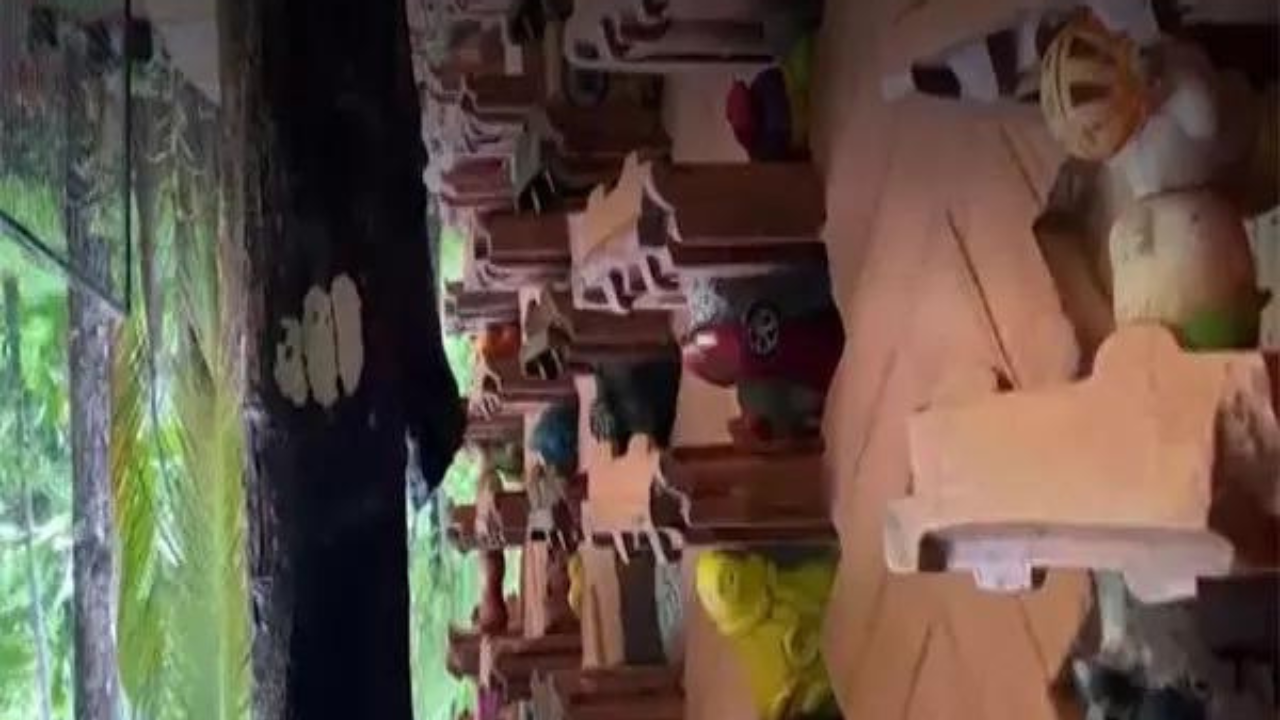The Toy House: A Unique Eco-Friendly Home Built with Love
In the quaint village of Kakkuni, located in Kozhikode, a bank employee and nature lover, Sreejesh T, has created a masterpiece through years of dedication and hard work – an eco-friendly house adorned with over 6,000 toys.
When asked about his inspiration and the process of collecting these toys, Sreejesh shared, “The house boasts a collection of more than 6,000 toys. Initially, I sourced them from relatives and neighbors, but that wasn’t enough. So, I started scouring scrap yards in Calicut during my holidays to find discarded toys. After selecting the best ones, we filled them with cement, not just for aesthetics but also for structural strength. The cement within the toys acts as a load-bearing element for the building.”
Every element used in constructing the house, including the mud tiles, is crafted from recycled materials that Sreejesh repurposed to challenge the culture of wastefulness. His primary goal was to create a home that harmonizes with nature without causing harm.
Describing the construction materials, he explained, “The house stands on compacted soil and a ramped road, enriched with nutrient-rich soil sourced from our site. The soil is compressed before crafting the bricks. The roof features a cement shell to reduce the need for steel, and the floor is embellished with oxide.”
Sharing his vision further, Sreejesh added, “I aimed to build an eco-friendly home that coexists harmoniously with nature. All the bricks used in the construction are made from our own soil, blended with cement in precise proportions. Every material originates from the earth.”
Supported by his wife and kids throughout the construction process, Sreejesh considers this project a cherished memory. Reflecting on this sentiment, he mentioned, “The walls of the house are salvaged from dilapidated old structures, promoting a culture of conservation by reusing these tiles.”
Featuring a basement pond and a guest room, the toy house was envisioned as a solution to combat plastic pollution. Sreejesh emphasized, “The architects meticulously ensured that the construction did not harm nature. Our aim was to combat plastic waste and leave behind a meaningful legacy.”
“During summers, the house maintains a cool temperature, minimizing any discomfort. It stands as an innovative marvel, distinct from conventional concrete edifices,” Sreejesh remarked on the house’s natural cooling properties and its significance as a pioneering creation.









